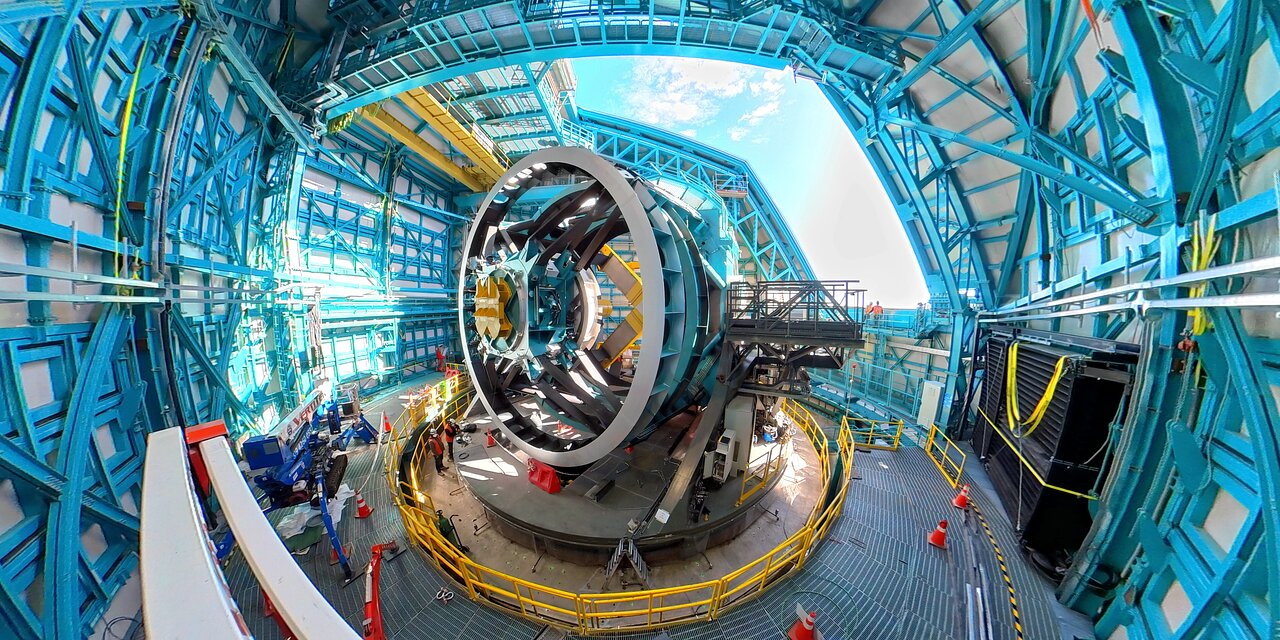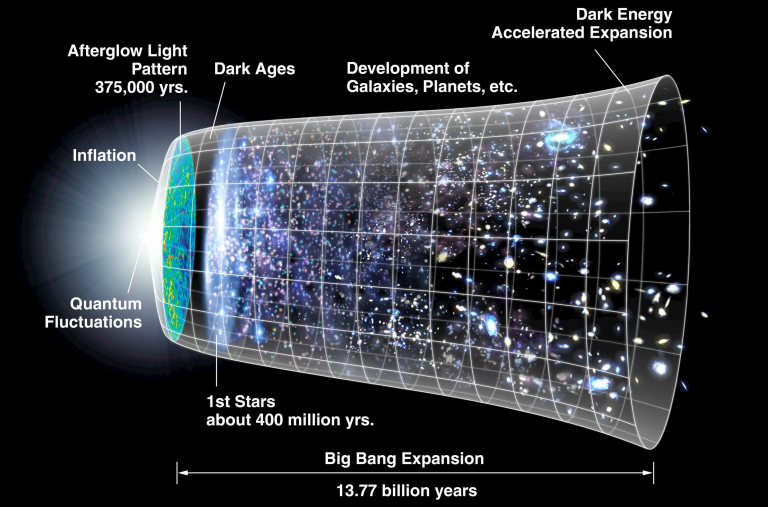The Rubin Observatory is set to revolutionize our understanding of the universe with its groundbreaking 10-year Legacy Survey of Space and Time project. This ambitious initiative aims to create a detailed map of the night sky, shedding light on mysteries such as dark matter and the structure of the Milky Way. At the heart of this astronomical endeavor lies the LSST Camera, the largest ever constructed, which will capture high-resolution imagery of celestial events and objects on an unprecedented scale. As the Simonyi Survey Telescope begins its operational phase, astronomers are poised to explore a new realm of celestial imaging and temporal analysis, tracking cosmic changes over a decade-long survey. Anticipation builds for mid-2025, when the first public releases from this monumental project will unveil the secrets of space and time and inspire a new generation of scientists and enthusiasts alike.
Known for its ambitious astronomical goals, the Vera C. Rubin Observatory is embarking on a transformative mission that combines both cutting-edge technology and extensive scientific inquiry. By utilizing the impressive capabilities of the LSST Camera, which will serve a diverse range of research interests, scientists hope to illuminate the enigmatic aspects of the universe, including dark matter and the evolution of our galaxy. This initiative not only emphasizes a comprehensive survey of the cosmos but also highlights the importance of making data easily accessible to the global scientific community. The project aims to fundamentally enhance our perception of the Milky Way and beyond, employing an innovative approach to astronomical imaging that captures the dynamic nature of the universe over a ten-year timeframe. Through these efforts, the observatory promises to foster collaboration and education, ultimately advancing our understanding of space and its intricate workings.
The Role of the LSST Camera in Astronomical Imaging
The LSST Camera, a groundbreaking achievement in astronomical imaging, is designed to capture the night sky with unparalleled clarity and detail. This massive camera, touted as the largest astronomical camera ever constructed, is integral to the Legacy Survey of Space and Time (LSST) project. It features 144 megapixels, which will enable it to photograph vast expanses of the universe, revealing faint celestial bodies, encompassing galaxies, stars, and other astronomical entities that were previously invisible to standard telescopes. Its substantial field of view allows astronomers to examine several objects simultaneously, making it an ideal instrument for wide-field studies of the cosmos.
In essence, the LSST Camera will facilitate what Professor Christopher Stubbs refers to as “cosmic cinematography” by combining large aperture capabilities with wide-field performance. This advancement means that asteroids, supernovae, and dark matter can be monitored and studied more effectively. The astronomers plan to exploit their wide-banding technique, resulting in periodic, time-lapse images of celestial phenomena which will lead to critical insights into stellar evolution and the dynamics of the Milky Way.
Exploring Dark Matter Through the Legacy Survey of Space and Time
Dark matter constitutes a significant portion of the mass in the universe, with estimates suggesting that it makes up about 90% of the Milky Way’s total mass. The LSST project is set to unveil crucial information about dark matter by capturing high-resolution images over a decade-long period. With its unique ability to observe the subtle gravitational effects of dark matter on visible objects, the observatory’s extensive dataset will provide clues about the cosmic structure that dark matter shapes, as well as its interactions in the universe.
Professor Stubbs points out that while dark matter is inferred through its gravitational effects, direct observation remains a challenge. By utilizing the LSST’s capabilities, the Rubin Observatory aims to enhance our understanding of this mysterious substance. By consistently tracking astronomical changes and movements in the night sky, researchers will gather data that may eventually elucidate the properties of dark matter and its role in the universe’s expansion.
Milky Way Mapping: A New Era in Astronomy
Milky Way mapping represents a cornerstone of the Rubin Observatory’s objectives, as the LSST aims to generate an extensive three-dimensional map of our galaxy. By systematically capturing images of the Milky Way over ten years, scientists will analyze star formation, stellar motions, and the distribution of astronomical bodies within the galaxy. This comprehensive mapping initiative will not only enhance our understanding of Galactic structure but also refine our knowledge of the temporal dynamics of star populations.
The project’s methodology, leveraging advanced technology such as the LSST Camera, promotes a multifaceted approach—combining wide-field observations with in-depth analyses of stellar and galactic evolution. As researchers retrieve massive volumes of data, they will track changes in the Milky Way’s structure, potentially unveiling secrets about its origins and the forces governing its evolution. This targeted approach is vital for addressing questions about how our galaxy fits into the larger cosmic tapestry.
The Revolutionary Concept of Open Data in Astronomy
An unprecedented aspect of the LSST project is its commitment to open data access, marking a significant shift in how astronomical research is conducted. Traditionally, research findings were often restricted to the scientific community, limiting collaboration and public engagement. However, the Rubin Observatory is pioneering an initiative to make its extensive database publicly available, empowering both professional scientists and amateur astronomers to contribute to and benefit from this wealth of knowledge.
This open-access model is designed to foster educational outreach, providing resources for K-12 educators and institutions around the world. By democratizing astronomical data, the initiative aims to inspire the next generation of scientists and stimulate interest in astrophysics, ultimately encouraging a broader understanding of complex concepts like dark matter and cosmic expansion.
Innovations in Astrophysics and Their Implications
The Rubin Observatory’s Legacy Survey of Space and Time project ushers in a new era of astrophysics leaping forward with technological innovations that promise to transform our explorations of the universe. With the integration of advanced imaging capabilities through the LSST Camera, astronomers will be equipped with tools capable of probing deep into cosmic mysteries like never before. This technology provides a significant tactical advantage for identifying transient astronomical events, mapping cosmic structures, and widening our comprehension of celestial dynamics.
The implications of this groundbreaking project extend into the fundamental realms of physics, as it seeks to unravel the enigmatic properties of dark energy and dark matter. By utilizing the high-resolution imaging capabilities of the LSST, researchers will embark on a path where they can not only observe the movements of stars and galaxies but also quantify the influence of unseen forces that govern galactic behavior. Understanding these forces will not only enhance theoretical models but also sharpen our comprehension of the universe’s expansion.
Astrophysical Tools and Fundamental Physics
Professor Stubbs emphasizes the unique capability of the LSST project, which has been engineered from the ground up to explore vital questions in fundamental physics using astrophysical tools. This targeted approach aims to stretch the boundaries of what we understand about dark matter and dark energy. Not only will the cutting-edge technology allow for real-time data collection and processing, but it will also enhance our predictive models regarding cosmic phenomena.
The project’s focus on comprehensive calibration and analysis of its instruments facilitates an unprecedented examination of critical physical concepts. By maximizing the usage of the LSST Camera, researchers will not only push the envelope in astrophysical studies but also refine algorithms that predict behaviors of cosmic elements which could lead to revolutions in physics as we know it.
Engaging with the Scientific Community and Beyond
The LSST project goes beyond mere observation; it aims to actively engage the global scientific community. By providing instantaneous access to a vast array of astronomical data, the Rubin Observatory is positioning itself as a central hub for researchers from diverse fields. This collaborative environment is expected to catalyze new discoveries and interdisciplinary approaches that leverage data from multiple scientific domains.
Further, by fostering connections not only among professional astronomers but also with students and the general public, this open data initiative seeks to inspire curiosity and foster a communal sense of exploration. By harnessing citizen science and educational collaborations, the observatory’s efforts could captivate young minds and contribute to a growing appreciation for the universe, uniting scientific scholarship with the excitement of discovery.
The Future of Space and Time Survey Projects
As we look to the future, the implications of ongoing and upcoming space and time survey projects are incredibly promising. The LSST sets a precedent for next-generation astronomical surveys that aim to tackle questions surrounding dark matter and celestial dynamics systematically. With the establishment of sophisticated imaging systems and extensive observation protocols, these projects will catalyze an unprecedented accumulation of astronomical data.
Anticipated outcomes of this ten-year endeavor include new perspectives on both known and unknown phenomena, shaping our understanding of cosmic evolution. Such projects promise to initiate an exciting chapter in astronomy, driving innovations in technology and methodology that will echo across the scientific community for decades to come.
Frequently Asked Questions
What is the Rubin Observatory and its significance in astronomical imaging?
The Rubin Observatory, officially known as the Vera C. Rubin Observatory, is a groundbreaking facility designed for astronomical imaging and mapping of the universe. It is hosting the 10-year Legacy Survey of Space and Time (LSST), which aims to create a comprehensive map of the universe, helping scientists study dark matter, dark energy, and the structure of the Milky Way.
How does the LSST Camera enhance the capabilities of Rubin Observatory?
The LSST Camera is the largest astronomical camera ever constructed, and it significantly enhances the Rubin Observatory’s capabilities by enabling wide-field observations with high resolution. This camera will capture images 21 times larger than those from the test camera, allowing for detailed cosmic cinematography and the detection of faint celestial objects.
What is the purpose of the Legacy Survey of Space and Time project at Rubin Observatory?
The Legacy Survey of Space and Time (LSST) project at Rubin Observatory aims to conduct a comprehensive survey of the night sky over a decade. Its purpose includes mapping the Milky Way, searching for potentially hazardous asteroids, and uncovering insights about dark matter and dark energy through the continuous observation and analysis of cosmic phenomena.
How does Rubin Observatory contribute to understanding dark matter?
Rubin Observatory plays a pivotal role in enhancing our understanding of dark matter by using its LSST Camera to capture detailed images and data over ten years. The observational abilities of the observatory will allow astronomers to study the gravitational effects of dark matter on visible matter, expanding our knowledge of this elusive substance.
When can we expect the first astronomical images from the Rubin Observatory?
The first public release of astronomical images from the Rubin Observatory is expected in mid-2025, following a six-month commissioning period for the LSST Camera, which will integrate with the Simonyi Survey Telescope to provide unprecedented views of the night sky.
What educational initiatives are associated with the Rubin Observatory’s projects?
The Rubin Observatory emphasizes education outreach as part of its mission. It plans to make all collected data available to the scientific community and the public, including educational resources for K-12 students and educators, thereby enhancing public engagement with astronomy and related science fields.
What makes the Rubin Observatory’s project revolutionary in astronomy?
The Rubin Observatory’s project is revolutionary because it adopts a completely open data approach, making vast amounts of astronomical data available to scientists and the public alike. This contrasts with traditional methods where data access was limited, thus allowing broader participation in astronomical research and data analysis, driving forward discoveries in fields like dark matter and cosmic phenomena.
How will the Rubin Observatory help map the structure of the Milky Way?
Through its extensive sky surveys, the Rubin Observatory will gather time-lapse images of the Milky Way, allowing it to map its structure with unprecedented detail. The high-resolution, wide-field imaging capabilities of the LSST Camera will enable researchers to observe and analyze star formations, galactic dynamics, and the distribution of dark matter within our galaxy.
| Key Points |
|---|
| Rubin Observatory’s Commissioning Camera captured first images of the night sky. |
| The main goal is to create a comprehensive map of the universe over a 10-year period. |
| The LSST Camera will be the largest astronomical camera ever constructed. |
| All data will be made immediately available for scientific community and education outreach. |
| The observatory aims to study dark matter and dark energy with unprecedented precision. |
Summary
Rubin Observatory is on the cutting edge of astronomical research, dedicated to unlocking the mysteries of the universe. With the recent deployment of the Commissioning Camera and plans for the largest LSST Camera, the observatory is positioned to gather extensive data on dark matter and dark energy, promising significant contributions to our understanding of cosmic phenomena. Through its commitment to open data policies, the Rubin Observatory not only paves the way for scientific discoveries but also engages and educates the next generation of astronomers.





